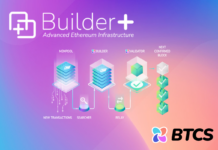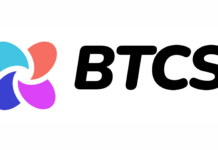In traditional finance, bonds are instruments of debt issued by corporations, banks or governments for the purpose of medium- to long-term investment. In other words, it’s a form of borrowing. The entity issuing the bond becomes the borrower and the individual or organization providing the funds becomes the lender. Bonds have been used in banking for decades. They are well-established and usually worthwhile financial instruments.
In 2008, the inception of the first cryptocurrency, bitcoin, began as a new form of money – a digital asset. This event happened to coincide with one of the worst financial crisis in history, second probably only to the 1929 stock market crash. After a somewhat chaotic start, the crypto economy, including cryptomining, has grown and evolved sufficiently over 10 years to challenge and disrupt long-standing business models and practices in the financial world.
Cryptomining, the activity of creating cryptocurrencies, is also an essential component of the process that ensures that transactions are verified and added to the blockchain ledger. Cryptocurrencies heralded a wave of innovation, creating new revenue streams and revolutionary business models that reflect the evolution of money, and how profits can be made.
Dr. Jürg Richards, a trader and financial innovator with over 30 years trading experience under his belt dedicated a large part of his life to financial and wealth management and is now involved in digital assets such as cryptocurrencies. He established and owns MiningFriendly, a cryptomining facility to enable anyone access to cryptocurrency mining services, even those with limited or no technical knowledge.
This venture into cryptocurrencies has lead to the development of a brand new financial instrument based on his mining business – a ‘mining bond.’
Introducing Medini
Dr. Richards will launch a new company, Medini AG that will be funded through issuing a bond. The bond will finance Medini’s cryptocurrency mining operations and mining services using the approaches of Proof-of-Work and Proof-of-Stake plus setting up Masternodes.
Proof-of-Work (PoW) Case Scenario
PoW will account for about 80% of the mining activity in the early stages of Medini. The proof-of-work mining method has existed since the inception of bitcoin (2009). It consumes a higher amount of energy than the other mining methods for computations to solve mathematical puzzles. As a result of this process, more cryptocurrencies (e.g. bitcoins, litecoins, etc.) come into circulation. The computational power first solves the puzzle to receive the reward. Since giant mining farms have flooded the market, they compete for highest profits amongst themselves, offering little chance for an individual miner to mine profitably using this method. That’s where Medini steps in.
Proof-of-Stake (PoS) Case Scenario
The PoS protocol is used in newer blockchains. Miners are here referred to as ‘validators’. Each validator has an arbitrary amount of coins (the stake) which are native to the respective blockchain. In this case, all validators compete with each other. According to a set procedure, a validator will be selected to calculate the next block through algorithms.
The main differences between POS and POW mining is a different consensus mechanism and fairer reward distribution. POS takes less time, consumes less energy and solves the problem of trust within the network in a more efficient way. The individual who creates the block is chosen automatically based on his/her wealth (stake) and the security of the network is much higher.
Dr. Richards runs also the MiningFriendly operation, an offering of cryptomining-as-a-service (CaaS), which removes the technical complexity of actually mining currencies through its value proposition of making mining accessible to everyone. Thanks to their easy to understand plan structure, participating in crypto mining requires no technical knowledge in mining. You simply need to decide which service to purchase and they take care of the rest. MiningFriendly opens the doors for everybody to become a part of the cryptocurrency market while providing profits along the way.
Masternodes (MN)
Masternodes are servers in a decentralized network. They perform various functions and receive bulk rewards per block. Depending on the particular network, rewards can be distributed one or more times per day. What’s more, Masternodes generate additional income through transaction confirmations.
In addition to the Medini Mining Bond, Dr. Richards is working on a project dedicated on Masternodes, where customers will be able to book a Masternode in exchange for returns. The process consists of choosing a given service without worrying about the technical difficulties involved. The service will be the first ever to be offered in fiat and cryptocurrencies. If you wish to know more about this project, visit their website.
Medini’s Computational Power
The hardware required for Medini will be located in Liechtenstein, which will help keep energy costs low, and allow for local maintenance. These activities will be funded through the Medini Mining Bond.
Medini Mining Bond Features
To fund the Medini mining operations (the purchase of new servers, payment of service fees for renting additional computational capacity) , the company will issue a bond in Liechtenstein in Swiss francs with a prospectus aligned to Swiss regulations (FINMA).
The bond will have a fixed rate coupon of 12% (1% per month) with a maturity date of twelve months from the date of issue. The bond size is expected to be a maximum of CHF 10’000’000, in denominations of CHF 10’000 or a multiple thereof.
If you wish to know more about Medini AG and the mining bond, visit their website.











